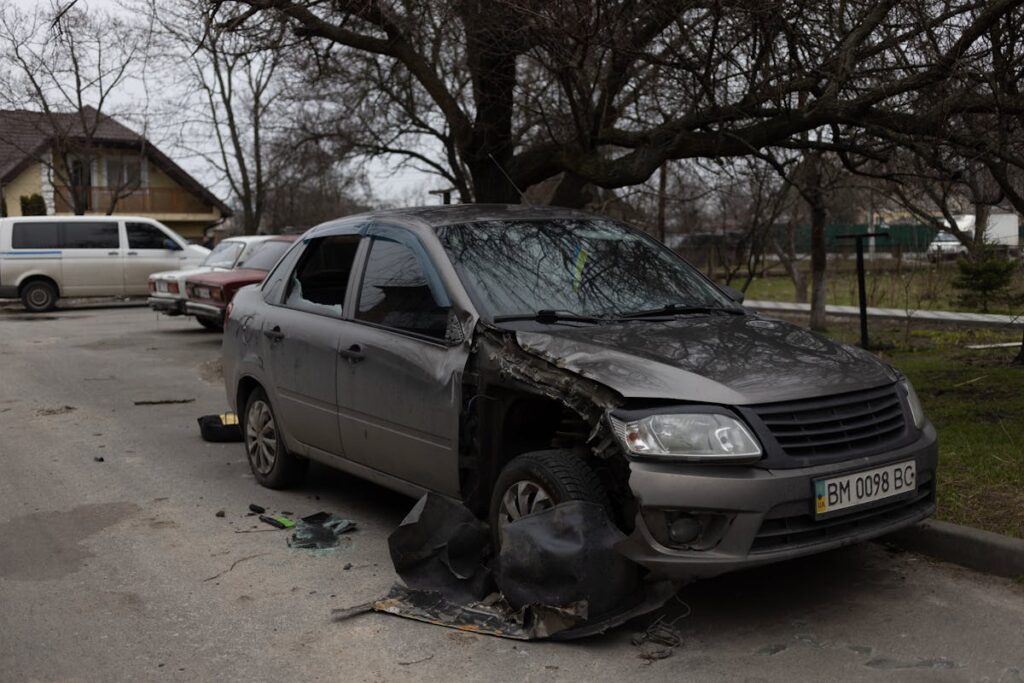Through the lens of litigation, we can discern the transformation of driving regulations and vehicle standards over the years. Accident lawsuits have informed the evolution of these rules, exposing safety deficiencies and prompting necessary amendments. Pivotal cases have led to stricter laws, such as mandatory seat belt usage and stringent DUI limits, while manufacturers have been compelled to incorporate advanced safety features in their designs. As we explore this intricate interplay between law and automotive safety, questions arise – to what extent will future litigation shape the roadways of tomorrow?
Historical Overview of Accident Lawsuits
Over the years, the landscape of accident lawsuits has seen significant transformation. This evolution has been driven by burgeoning litigation trends and fluctuations in claim frequency. As societal attitudes towards safety have changed, so too have the dynamics of accident-related litigation.
In the early 20th century, accident lawsuits were relatively rare. The lack of regulations and the high-risk nature of early motoring made claim frequency low. However, as vehicles became more commonplace and roads busier, the number of accidents and subsequent lawsuits began to rise. This increase in claim frequency led to an escalation in litigation, shaping the landscape of accident lawsuits.
The advent of seat belt laws, drunk driving regulations, and safety equipment mandates in vehicles represented pivotal moments in this evolution. These changes were often precipitated by high-profile accident lawsuits that highlighted the need for stronger regulations.
In recent years, litigation trends have shifted again, with an increasing focus on manufacturer liability and vehicle technology. High-profile cases involving autonomous vehicles and defective parts have highlighted the need for robust regulations and standards.
In essence, the historical progression of accident lawsuits has been a primary catalyst in the evolution of driving regulations and vehicle standards.
Legal Precedents Setting Regulations
The establishment of legal precedents has played an essential role in the creation and adjustment of driving regulations. Through interpreting and applying negligence standards, courts have determined the obligations of motorists, thereby shaping the rules of the road. These legal precedents have not only clarified drivers’ duties but have also created liability frameworks that hold motorists accountable for breaches of these duties.
Legal precedents have also considerably influenced vehicle standards. Courts have used negligence standards to assess whether a vehicle’s design or manufacturing process contributed to an accident, thereby pushing manufacturers to improve safety features. This has led to the creation of liability frameworks that hold manufacturers accountable for design and manufacturing defects.
This process has been cyclical, with courts interpreting and applying regulations, which in turn influence the creation or adjustment of these rules. As a result, it is not just the laws themselves, but also the way they are interpreted and applied that shape driving behavior and vehicle standards. This constant legal evolution guarantees that our roads and vehicles continue to become safer, demonstrating the power and importance of legal precedents in shaping driving regulations.
Influential Accident Cases
Examining influential accident cases reveals how legal proceedings can considerably impact driving regulations. One striking example is the “Haddon v. State” case. The plaintiff, injured in a car accident, argued that the state’s negligence in maintaining safe roads contributed to the accident. The court’s decision to uphold negligence standards drastically influenced liability reforms, hence transforming driving regulations.
The landmark case “Moch Co. v. Rensselaer Water Co.” further exemplified this. The court ruled that the failure of the water company to provide adequate pressure, which resulted in a fatal car fire, amounted to negligence. This ruling prompted a review of negligence standards and instigated wider liability reforms. It underscored the need for entities to anticipate potential hazards and take preventative measures, hence influencing driving regulations and safety standards.
In essence, these influential accident cases have been instrumental in shaping liability reforms and negligence standards. They’ve set precedents that have made the roads safer by holding entities accountable for their actions or inactions. Consequently, they’ve played a significant role in the constant evolution of driving regulations and vehicle standards.
Impact on Road Safety Laws
Significant changes in road safety laws often result from influential accident lawsuits. These lawsuits act as catalysts, prompting regulatory bodies to reassess and refine existing regulatory frameworks. This, in turn, leads to the implementation of improved road safety initiatives that aim to prevent accidents and protect the public.
One of the key ways in which accident lawsuits influence road safety laws is by highlighting gaps in existing regulations. Compelling legal cases often expose weaknesses in current laws, providing valuable insights that enable lawmakers to devise more effective safety measures. For instance, lawsuits have led to stricter regulations on driving under the influence, speeding, and the use of seat belts, among other safety-related issues.
Moreover, accident lawsuits play a pivotal role in shaping future road safety initiatives. These legal battles serve to raise public awareness about the consequences of negligent driving and the importance of adhering to road safety laws. Consequently, they foster a culture of safety-first driving, further enhancing the effectiveness of these laws.
Changes in Vehicle Design Standards
The landscape of vehicle design standards has undeniably been molded by the ramifications of accident lawsuits. An examination of these influences reveals a clear evolution in car design, moving progressively towards enhanced safety measures. It is compelling to argue that these legal actions have acted as a catalyst, compelling manufacturers to prioritize safety in their design ethos, thereby impacting the entire automotive industry.
Influence of Legal Actions
While many may not immediately grasp the correlation, it is through the lens of legal actions that we can see a profound influence on vehicle design standards.
Legal accountability, in particular, has played a role in compelling manufacturers to comply with evolving regulations. The threat of lawsuits has prompted them to prioritize safety features, leading to significant changes in design standards. Consumer protection, too, has been a driving force, with legal advocacy and public awareness campaigns highlighting the need for safer vehicles.
Regulatory compliance has guaranteed that manufacturers adhere to strict safety standards, while liability reforms have made it clear that they can be held responsible for any flaws in vehicle design. Safety advocacy groups have used the courts to push for these reforms, leveraging the judicial influence to enact changes.
Tort reform, another product of legal actions, has led to enhanced risk management strategies within the auto industry. This has resulted in safer, more reliable vehicles, and has increased public trust in manufacturers.

Evolution in Car Design
In the span of only a few decades, automobile design has undergone a remarkable transformation. This evolution is driven by factors such as aerodynamic efficiency, materials innovation, and technology integration. The inclusion of advanced safety features and enhancement in user accessibility have become paramount, influenced considerably by accident lawsuits and subsequent driving regulations.
Aerodynamic efficiency and materials innovation work hand-in-hand to optimize vehicle performance while reducing environmental impact. The integration of technology, such as driver-assist capabilities, has revolutionized user accessibility, making modern vehicles more user-friendly. Concurrently, the design aesthetics of vehicles have evolved, reflecting societal trends and consumer preferences.
The incorporation of enhanced safety features has been a critical aspect of this evolution. Remarkably, crash testing has become an indispensable part of the design process, ensuring that vehicles can withstand high-impact collisions and protect occupants. This rigorous approach to safety has been spurred by accident lawsuits, prompting manufacturers to prioritize safety over other considerations.
Environmental considerations have also shaped car design, with an increasing emphasis on reducing emissions and improving fuel efficiency. This evolution in car design demonstrates the industry’s responsiveness to changing societal needs and legal landscapes, ultimately driving improvements in safety, performance, and sustainability.
Notable Changes in Driving Behavior
Given the rapid advancements in automotive technology, there have been notable changes in driving behavior in recent years. This evolution is fueled by the intersection of technological improvements and a growing understanding of the importance of traffic etiquette and driver awareness.
These changes are most evident in the increased emphasis on defensive driving. The culture of speed and aggression that once dominated the roads is gradually being replaced by a culture of caution and respect. This shift is reflective of a wider societal change, recognizing the importance of safety and mutual respect on the roads.
Furthermore, the rise of advanced driver-assistance systems (ADAS) has introduced a new dimension to driver awareness. Features such as forward collision warnings and automatic emergency braking have made drivers more conscious of their surroundings, thereby promoting safer driving habits.
The growing adherence to traffic etiquette is another notable change. Drivers are more mindful of following the rules of the road, including signaling intentions and maintaining a safe distance from other vehicles.
These changes in driving behavior demonstrate a move towards safer, more responsible driving, influenced by technological advancements and a shift in societal attitudes towards road safety. The end result is a safer driving environment for all road users.
The Role of Insurance Companies
As we navigate through the complexities of accident lawsuits and driving regulations, understanding the role of insurance companies becomes essential. They play integral roles in handling insurance claims, evaluating accident liabilities, and determining the impact on premium rates. This analysis will shed light on these critical functions, illustrating how they influence both individual driver experiences and broader traffic safety policies.
Insurance Claims and Regulations
Why do insurance companies play such a significant role in accident lawsuits and driving regulations? The answer lies in their inherent function of risk management and their adherence to the claims process and regulatory compliance.
Insurance companies absorb the financial impact of accidents, transferring risk away from individuals and businesses. Their role in accident lawsuits is essential as they often bear the cost of settlements, thereby influencing driving regulations indirectly. The more claims an insurer pays out, the more it will advocate for safer driving laws to reduce accident frequency and severity.
The claims process, a structured procedure of evaluating and settling insurance claims, is another important component. Here, insurers must balance the need to compensate policyholders promptly and adequately while preventing fraudulent claims. The fairness and efficiency of this process can shape public opinion and influence lawmakers, potentially leading to legislative changes.
Moreover, insurance companies are subject to stringent regulatory compliance. They must adhere to various laws and regulations designed to protect consumers and maintain market stability. Non-compliance can result in severe penalties, thereby prompting insurers to promote safe driving practices and encourage responsible behavior among policyholders. Consequently, insurance companies play a significant role in shaping driving regulations and vehicle standards.
Assessing Accident Liabilities
Building upon our understanding of the insurance company’s role in the claims process and regulatory compliance, we can further explore their responsibility in evaluating accident liabilities. In the aftermath of vehicular accidents, insurance companies have the vital task of appraising the negligence standards and determining the corresponding liability types that apply.
The appraisal of negligence standards requires a meticulous review of the events leading to the accident. This includes evaluating to what extent each party involved breached their duty of care. For instance, did the driver fail to observe speed limits, or did they neglect to use turn signals? These determinations are essential in assigning levels of fault.
Determining liability types, on the other hand, involves classifying the financial responsibility borne by each party. This can range from property damage to bodily injury liabilities. The type and amount of liability assigned shape the financial outcome of the claims process.
Impact on Premium Rates
Delving into the domain of premium rates, it becomes clear that the insurance companies play a critical role. They are the architects of premium structures and are instrumental in evaluating risk profiles of drivers, thereby influencing premium fluctuations.
Premium rates are meticulously calculated based on risk evaluation procedures. Insurance companies assess a driver’s propensity to cause or get involved in an accident. These evaluations consider a myriad of factors, including driving record, geographical location, age, and even the type of vehicle driven. Consequently, drivers with a higher risk evaluation may experience premium fluctuations, witnessing an increase in their rates.
The impact of accident lawsuits is substantial in this scenario. Following a lawsuit, not only does the at-fault driver’s premium increase, but there could also be a ripple effect causing a general uptick in premium rates. This is because insurers need to balance out the payouts made for claims.
Therefore, it is clear that accident lawsuits have a decisive impact on driving regulations and vehicle standards, and they indirectly drive the evolution of insurance premium rates. With stringent regulations and higher standards, the goal is to reduce accidents and thereby stabilize premium rates.
Future Developments and Expectations
Looking ahead, the landscape of accident lawsuits and driving regulations is expected to undergo significant transformations. Emerging technologies, particularly autonomous vehicles, are set to reshape the face of transportation, bringing along a new set of regulatory challenges.
Autonomous vehicles, promising improved efficiency and safety innovations, also pose unique implications for public policy and liability. As the technology advances, the question of who bears responsibility in the event of an accident – the driver, the car manufacturer, or the software developer – becomes increasingly complex. The current regulatory framework, primarily designed around human drivers, is ill-equipped to handle such scenarios.
Moreover, as these vehicles become more prevalent, policy must evolve in tandem to ascertain public safety and fair liability distribution. This necessitates a thorough understanding of the technology, rigorous testing, and a flexible legislative approach. The task for lawmakers is, consequently, twofold: fostering innovation while protecting consumers.
Frequently Asked Questions
What Is the Process of Filing an Accident Lawsuit?
The process of filing an accident lawsuit involves a detailed litigation timeline, starting with evidence collection and documentation, followed by filing a complaint, discovery phase, trial proceedings, and finally, potential appeal processes if required.
How Can a Driver Protect Themselves Legally After an Accident?
To legally protect themselves after an accident, drivers should maintain extensive insurance coverage. Seeking immediate legal representation can also help navigate potential lawsuits, ensuring their rights and interests are effectively safeguarded throughout the process.
What Are the Most Common Causes of Traffic Accidents?
The most common causes of traffic accidents are driver distractions, such as mobile phone use, and speeding violations. Both greatly increase risk, leading to decreased reaction times and increased severity of accidents when they occur.
How Do Driving Regulations Vary in Different Countries?
International driving regulations considerably vary among countries, influenced by factors like traffic density and cultural norms. Regulatory differences, such as speed limits and seat-belt laws, reflect each country’s approach to ensuring road safety.
How Often Are Vehicle Design Standards Updated?
Vehicle design standards are updated periodically, often in response to technological advances and evolving understanding of vehicle safety. This design evolution aims to continually enhance the safety and efficiency of vehicles on our roads.

